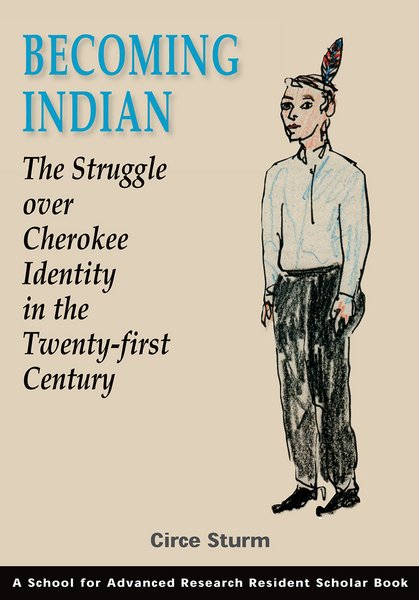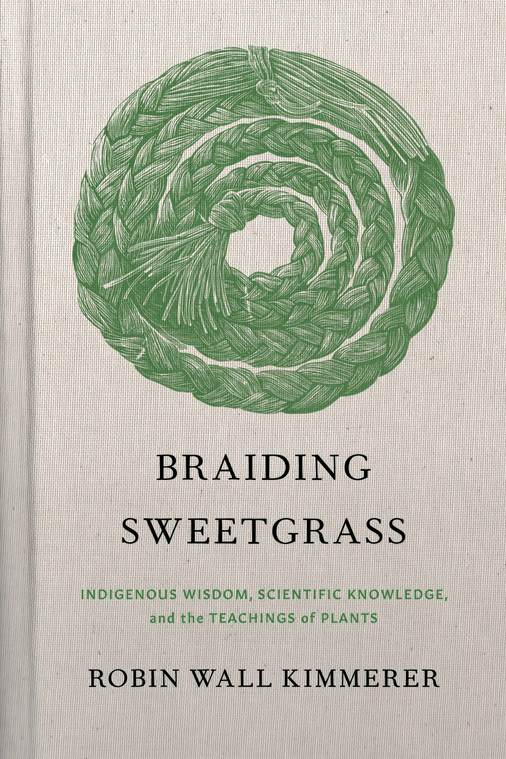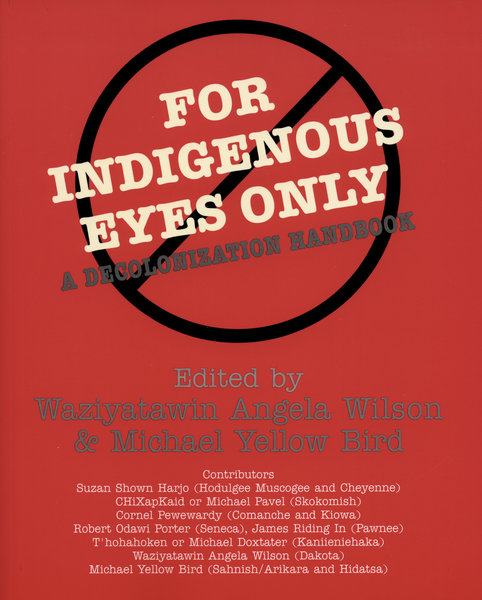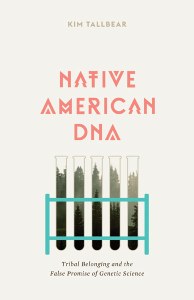Lara Evans, Water Keeps Moving, from the Directions for Home series, 2008. Digital print. Courtesy of the artist.
Created with the assistance of IARC curator of education Felicia Garcia.
When life seems to be changing day by day, if not hour by hour, we look to sources of information that we have come to know and trust. Books like those published by SAR Press are resources that readers can return to again and again, not only for the most current thinking, but also for the long view: histories that help us to interpret events past and present so that we can work together toward a better future.
The books in this list address Indigenous identity from different perspectives and in different ways: Native artists discuss the tensions between art and life; Native anthropologists and historians describe changing forms of identity via stereotyping, genetic science, ecology, and decolonization; and Native writers in various genres tell the stories of their people surviving and thriving, past and present. Although writing specifically about Native women artists and social stereotyping, Nancy Mithlo in “Our Indian Princess”: Subverting the Stereotype suggests one way in which these books, though different, are also similar:
The active interplay of self-definitions and societal definitions of self that I document here resists standard linear structures of assimilation, accommodation, or resistance. What I hope to show is that although contemporary Native women artists are at times limited by market values, media norms, and race and gender bias, these constraints are not all-encompassing. In fact, active self-narration is often structured in reference to how external stereotyping is flawed. . . . Utilized as one productive resource among many tools of self-expression, these counternarratives provide rich insights into how contemporary indigenous realities are conceptualized and conveyed in visual registers.
In other words, all of these books describe experiences and histories that are far from simple or straightforward; neither are they over. “These works are important because for too long Native peoples were not in control of our own narratives and representation,” says Felicia Garcia, SAR’s curator of education at the Indian Arts Research Center. “Being able to tell our own stories on our own terms through scholarly works and literature is critical to our process of healing from the wounds of colonization. Many of the books on this list are incredibly meaningful to me and have helped me on my path as an Indigenous museum professional.”
Below you’ll find a list of books written by Native American scholars and artists from SAR Press and other publishers describing, analyzing, and celebrating Indigenous identity, along with a few others on related subjects.
Art in Our Lives: Native Women Artists in Dialogue
Cynthia Chavez Lamar and Sherry Farrell Racette (editors, SAR Press, 2010, with Lara Evans)
“I think of how dedicated and strong [women artists] must be to have chosen and persisted in their artistic paths. Indeed, in talking with artists and understanding their history, I am told that they have made sacrifices and passed up opportunities in order to commit themselves to their work. This seems to be particularly true of Native women artists, who manage and nurture multiple commitments: their art, business, community, and family and their own personhood.”
—Cynthia Chavez Lamar
Becoming Indian: The Struggle over Cherokee Identity in the Twenty-First Century
Circe Sturm (SAR Press, 2011)
“I explore the deeper social and cultural values that lie behind this racial movement and why so many Americans, from so many different walks of life, are now reinscribing their autobiographies and finding such deep personal and collective meaning in the process of reclaiming Indianness. This is not something people were so willing to do forty years ago, and the fact that they do so now reveals much, I believe, about the shifting politics of race and indigeneity in the United States.”
Braiding Sweetgrass: Indigenous Wisdom, Scientific Knowledge and the Teachings of Plants
Robin Wall Kimmerer (2020)
“As a botanist, Robin Wall Kimmerer has been trained to ask questions of nature with the tools of science. As a member of the Citizen Potawatomi Nation, she embraces the notion that plants and animals are our oldest teachers. . . . In a rich braid of reflections that range from the creation of Turtle Island to the forces that threaten its flourishing today, she circles toward a central argument: that the awakening of a wider ecological consciousness requires the acknowledgment and celebration of our reciprocal relationship with the rest of the living world. For only when we can hear the languages of other beings will we be capable of understanding the generosity of the earth, and learn to give our own gifts in return.”
—from the publisher’s description
For Indigenous Eyes Only: A Decolonization Handbook
Waziyatawin Angela Wilson and Michael Yellow Bird (editors, SAR Press, 2005)
“Since the relationship between the colonizer and the colonized is so deeply entrenched in the United States and Canada, most of us have never learned how to actively challenge the status quo. . . . Thus, no handbook exists to teach our people how to begin to challenge this oppressive relationship in our daily lives. Until now. This workbook is intended as a primer to help you to think more concisely about the meanings of colonization and decolonization, to give you a language to talk about them, and to assist you in developing strategies for decolonizing your life and your world.”
For Indigenous Minds Only: A Decolonization Handbook
Waziyatawin and Michael Yellow Bird (editors, SAR Press, 2012)
“A number of new Indigenous scholars, writers, and activists have collaborated for the creation of a sequel to the Decolonization Handbook. The title . . . reflects an understanding that decolonizing actions must begin in the mind, and that creative, consistent, decolonized thinking shapes and empowers the brain, which in turn provides a major prime for positive change. Undoing the effects of colonialism and working toward decolonization requires each of us to consciously consider to what degree we have been affected by not only the physical aspects of colonization, but also the psychological, mental, and spiritual aspects.”
The Heartbeat of Wounded Knee: Native America from 1890 to the Present
David Treuer (2019)
“The received idea of Native American history . . . has been that American Indian history essentially ended with the 1890 massacre at Wounded Knee. . . . Growing up Ojibwe on a reservation in Minnesota, training as an anthropologist, and researching Native life past and present for his nonfiction and novels, David Treuer has uncovered a different narrative. Because they did not disappear—and not despite but rather because of their intense struggles to preserve their language, their traditions, their families, and their very existence—the story of American Indians since the end of the nineteenth century to the present is one of unprecedented resourcefulness and reinvention.”
—from the publisher’s description
An Indigenous Peoples’ History of the United States
Roxanne Dunbar-Ortiz (2015)
“Today in the United States, there are more than five hundred federally recognized Indigenous nations comprising nearly three million people, descendants of the fifteen million Native people who once inhabited this land. The centuries-long genocidal program of the US settler-colonial regimen has largely been omitted from history. Now, for the first time, acclaimed historian and activist Roxanne Dunbar-Ortiz offers a history of the United States told from the perspective of Indigenous peoples and reveals how Native Americans, for centuries, actively resisted expansion of the US empire.”
—from the publisher’s description
Native American DNA: Tribal Belonging and the False Promise of Genetic Science
Kim TallBear (2013)
“Kim TallBear shows how DNA testing is a powerful—and problematic—scientific process that is useful in determining close biological relatives. But tribal membership is a legal category that has developed in dependence on certain social understandings and historical contexts, a set of concepts that entangles genetic information in a web of family relations, reservation histories, tribal rules, and government regulations. At a larger level, TallBear asserts, the ‘markers’ that are identified and applied to specific groups such as Native American tribes bear the imprints of the cultural, racial, ethnic, national, and even tribal misinterpretations of the humans who study them.”
—from the publisher’s description
“Our Indian Princess”: Subverting the Stereotype
Nancy Marie Mithlo (SAR Press, 2009)
“This text follows my interest in the ways Native American women in the arts describe and define their lives as professionals, family members, tribal members, and activists. The narratives I discuss testify to the dynamic, fluid character of self-definition as Native women resolve conflicting mandates in economic, political, and personal spheres. They also expose the problematic nature of conceptualizing self-identity as static—or even as an object—instead of an active, continual process.”
There There
Tommy Orange (2018)
“Tommy Orange’s wondrous and shattering bestselling novel follows twelve characters from Native communities: all traveling to the Big Oakland Powwow, all connected to one another in ways they may not yet realize. . . . Together, this chorus of voices tells of the plight of the urban Native American—grappling with a complex and painful history, with an inheritance of beauty and spirituality, with communion and sacrifice and heroism. Hailed as an instant classic, There There is at once poignant and unflinching, utterly contemporary and truly unforgettable.”
—from the publisher’s description
You may also want to consider other titles from SAR Press:
- Aboriginal Business: Alliances in a Remote Australian Town, by Kimberly Christen, 2009
- Exchanging Words: Language, Ritual, and Relationality in Brazil’s Xingu Indigenous Park, by Christopher Ball, 2018
- The Fabric of Indigeneity: Ainu Identity, Gender, and Settler Colonialism in Japan, by ann-elise lewallen, 2016
- Más Que un Indio (More Than an Indian): Racial Ambivalence and Neoliberal Multiculturalism in Guatemala, by Charles R. Hale, 2006
- The Work of Sovereignty: Tribal Labor Relations and Self-Determination at the Navajo Nation, by David Kamper, 2010
Find out more about SAR Press and order any of our books.
SAR has been publishing scholarship of the highest caliber for over one hundred years.











